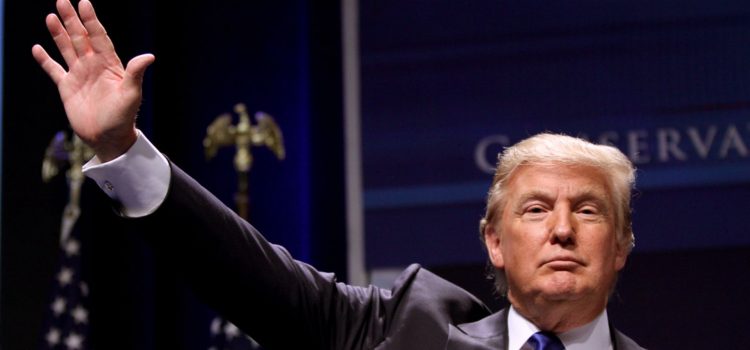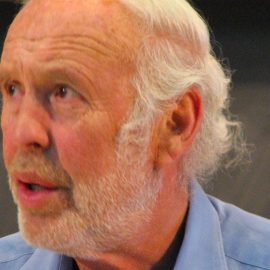
Why do people like Donald Trump? What’s his appeal?
People like Donald Trump because they see him as a symbol of success and an answer to a declining white Christian majority. To fully understand this appeal, it helps to take a look at how his public image has developed over time.
Read on for more insights into what makes Trump so appealing to many.
How Donald Trump Cultivated a Public Image
Why do people like Donald Trump, and how did he gather support? By the late 1970s, Trump was a rising star. He began cultivating a public image as a forward-thinking, get-things-done businessman with swagger. He believed positioning himself this way could make him a public symbol of success and prosperity. Trump instinctively grasped the importance to his real estate business of media relations and of being seen as popular and well-liked. Thus, he made a point of making appearances in the elite New York City party scene, rubbing shoulders with celebrities and sharing salacious stories with the press.
(Shortform note: Some observers have noted that Trump’s career-long craving for attention, adulation, and fame highlight his idea that celebrity and notoriety are the most important measures of success. These analysts assert that Trump uses fame as a yardstick to evaluate individuals, their significance, and their value. Indeed, Trump views merely being in the public eye as a mark of achievement, whether that coverage is favorable or unfavorable.)
Trump’s public image received a further boost with the completion of Trump Tower—a well-publicized luxury building—on Manhattan’s Fifth Avenue in 1983. The building’s location in the heart of Manhattan also brought him into contact with the city’s old guard financial and cultural elite. Trump resented and reviled the cultural establishment for their rejection of him as crass and boorish—but at the same time, he craved their approval and acceptance. This love/hate dynamic with traditional elites continued into his later political career.
| Richard Nixon and Cultural Resentments Against Elites Trump’s resentments toward the old guard cultural elite of Manhattan echoed the resentments of another young striver who would ascend to the White House in 1969—Richard Nixon. In Nixonland, historian Rick Perlstein charts the course of a young Richard Nixon’s political development, focusing in particular on Nixon’s sorting of the American population into two groups: “Franklins” and “Orthogonians.” According to Perlstein, the highly intelligent but awkward Nixon experienced a formative social dynamic as a college student in which he felt excluded by a group of cool, established, and socially accepted students called the “Franklins.” In response, Nixon organized the “Orthogonians,” a group for individuals like himself—strivers who sought advancement, recognition, and success through determination and effort rather than relying on inherent social grace. According to Perlstein, Nixon channeled his resentments into a populist appeal, aligning himself with the white middle class—whom he saw as the Orthogonians on a national scale—and stoking their rage against perceived elites. Decades later during his own political career, Trump would tap into many of these same appeals, casting himself as a resentful outsider who railed against elites, globalists, and intellectuals—a theme we’ll explore in detail later in this guide. |
The Symbol of Success
In the 1980s, Donald Trump continued to actively shape his public image, presenting himself as a flamboyant, sexually adventurous, and brilliant self-made real estate tycoon. This image resonated with the public, transforming Trump into a national symbol of wealth and opulence.
(Shortform note: During this time, not everyone agreed that Trump’s kind of success was something to admire or emulate. In her contemporaneous diary, former First Lady Barbara Bush—and mother of future Trump political rival Jeb Bush—expressed disdain for Trump, referring to him as the ultimate symbol of 1980s greed and excess. In her entries, she wrote of how distasteful she found his ostentatious and self-promoting lifestyle, contrasting Trump’s crassness with her staid, conservative, blueblood values and aesthetic.)
Spreading the “Birther” Conspiracy
In 2009, Trump joined Twitter with the handle @realDonaldTrump. He quickly embraced the platform, demonstrating a talent for inciting outrage and grabbing attention with provocative stunts. In 2011, Trump became the nation’s leading proponent of the “birther” conspiracy theory, alleging that President Barack Obama (the nation’s first Black president) was born outside the US and, therefore, ineligible to serve as president. Haberman writes that Trump’s hyping of the conspiracy theory, while demonstrably false and slanderous, nevertheless appealed deeply to the Republican Party’s cultural resentments, their fear of a changing world, and their desire to crush and defeat those they saw as their enemies.
(Shortform note: In A Promised Land, his post-presidential memoir, former president Obama addresses Trump’s birther claims. He writes of his dismay that the mainstream media continued to give Trump free airtime to spread misinformation, treating him as more of an amusing spectacle than a potentially dangerous demagogue. Obama, however, writes that he understood the need to take Trump seriously as a political threat. Obama grasped that spectacle and outlandishness could command media attention—and that made Trump powerful.)
Launching the Campaign
In June 2015, Trump officially announced his presidential campaign with a divisive speech that included controversial remarks about Mexican immigrants, alleging that they were “rapists” and calling for a border wall to separate the US from Mexico. Trump’s campaign benefited from adopting a carnival-like atmosphere, featuring stunts and confrontations—gaining significant media attention for himself while keeping it from his rivals.
(Shortform note: Although critics considered Trump’s “Build the Wall” rhetoric as evidence of his xenophobia, it’s worth noting that his Democratic successor, Joe Biden, continued construction on certain segments of the border wall. Despite his initial promise to halt the project, the Biden administration opted to complete unfinished sections, citing reasons such as addressing gaps in border security and potential national security concerns. The decision sparked criticism from both sides of the political spectrum and highlighted similarities between Trump’s immigration policies and Biden’s.)
To the shock (and dismay) of many in the mainstream press, the Trump campaign gained traction with Republican voters, who were drawn to his confrontations with journalists, protesters, and his fellow candidates.
(Shortform note: One study highlighted the unprecedented amount of free media exposure Trump garnered, which far surpassed that of his Republican and Democratic rivals. The study estimated that Trump’s coverage was worth nearly $2 billion—nearly twice that of his Republican rivals’ combined total. This figure underscored his ability to dominate news cycles and shape public discourse without significant campaign spending or fundraising.)
The Roots of Trump’s Appeal
Trump skillfully capitalized on the polarization that had been building in America for decades. The collapse of trust in elites following significant events like 9/11, the Iraq War, and the financial crisis, along with white racial and ethnic resentment after the election of the first Black president, created fertile ground for his confrontational and resentment-focused brand of politics.
His litany of false claims—such as the “birther” claim about Obama and his claims about Mexican immigrants—fed this wave of white cultural resentment. When he was criticized in the mainstream press for this, he doubled down by portraying himself as a victim of a smear campaign by the “liberal” media—turning their attacks into a source of strength by deepening the bond between him and his base.
| The Perceived Decline of America as a White Christian Nation Some social science research delves further into this phenomenon of white cultural resentment. This research specifically highlights the decline of white Christians as a demographic majority in the US and the broader implications of this demographic shift. The argument is that the decline of white Christian dominance is accompanied by a sense of anxiety and nostalgia for a bygone era when white Christians held a more central role in shaping American culture and identity. As white Christians see their numerical majority wane, they develop feelings of cultural and racial displacement. Political scientists have pointed to these anxieties about displacement as a source of Trump’s exceptional performance with white evangelical voters in particular—with 85% of the evangelical vote in the 2020 election, they’re his strongest constituency. |






